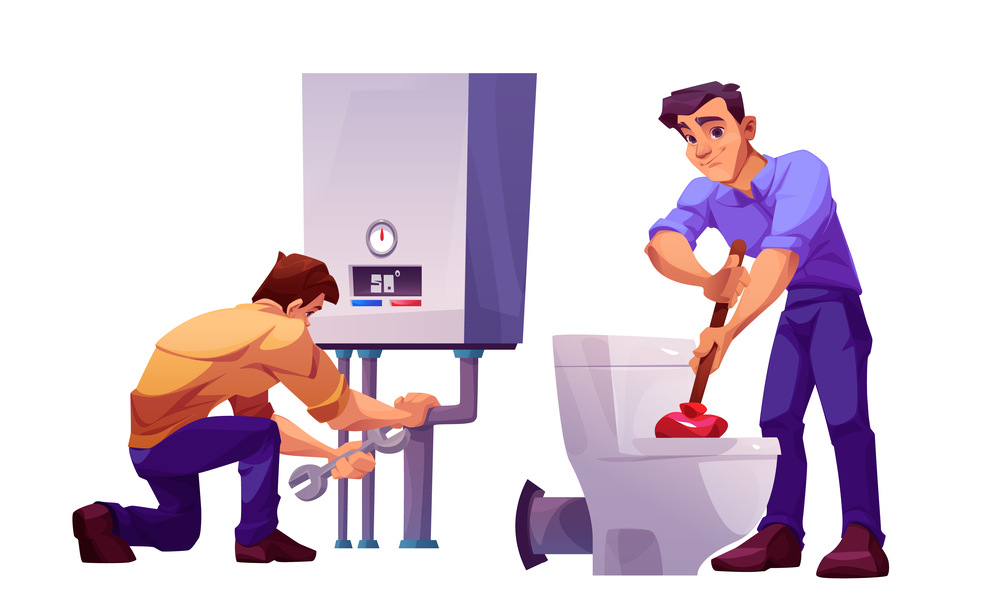Flushing myths abound daily, often leading to confusion and unwanted plumbing disasters. From urban legends about what can—or can’t—be flushed down the toilet to misconceptions surrounding how our plumbing systems work, these tall tales are more common than you’d think. Are you guilty of believing that flushing certain items is harmless? Or perhaps you’ve heard advice on cleansing your system that sounds too good to be true? This guide will shed light on the reality behind these myths and help you confidently navigate the murky waters of flushing practices. Say goodbye to misinformation as we dive into the science, debunk popular beliefs, and arm you with essential tips for maintaining your toilet’s health while avoiding costly repairs!
Common Misconceptions About Flushing

Many people believe that flushing anything down the toilet is acceptable as long as it’s liquid. This misconception leads to severe plumbing issues, like blocked toilets.
Another myth suggests that a powerful flush can solve all problems. While strong jets can help, they won’t necessarily remove stubborn clogs or debris stuck in pipes.
Some think using more toilet paper will cause no harm if flushed properly. In reality, excessive paper can lead to blockages and costly repairs.
There’s also a common belief that “flushable” wipes are safe for drainage systems. However, many of these products break down slowly, creating significant plumbing challenges.
People often underestimate how quickly their pipes can become clogged due to inappropriate flushing habits. Understanding what truly belongs in the toilet bowl versus the trash bin is vital.
Exploring the Science Behind Flushing
Flushing isn’t just a simple pull of the handle; it’s a fascinating process driven by physics and engineering. When you flush, water is released from the tank into the bowl. This surge creates a vortex that pulls waste away.
The design of your toilet matters, too. Most modern toilets utilize gravity as their primary mechanism, while some advanced systems employ pressure-assisted technology for more powerful flushing action.
Water conservation plays a role in this science as well. Low-flow toilets use less water without sacrificing performance, making them eco-friendly choices. Understanding these mechanisms can help homeowners make informed decisions about maintenance and repair.
Toilet malfunctions often stem from simple issues like faulty flappers or leaking tanks, impacting efficiency significantly. Recognizing how these elements work together can demystify common problems related to blocked toilet repair or how to repair a running toilet effectively.
Debunking Popular Flushing Myths
Many believe flushing anything other than human waste and toilet paper is acceptable. This myth leads to serious plumbing issues, like a blocked toilet repair. Items like wipes, dental floss, and cotton swabs don’t disintegrate in water or cause clogs.
Another common misconception is that a running toilet is fine if the sound doesn’t bother you. This can waste gallons of water daily, significantly increasing your utility bill.
Some think vinegar or baking soda can replace proper cleaning agents for toilets. While these natural remedies have their merits, they often lack the antibacterial properties needed for thorough sanitation.
Many assume older toilets are less efficient than newer models. However, many vintage systems can outperform modern ones when maintained properly—knowing how to repair a running toilet may extend its life indefinitely without replacement.
The Dangers of Believing in Flushing Myths
Believing in flushing myths can lead to serious consequences. Many assume that anything biodegradable is safe to flush, which is far from the truth. Items like wipes and cotton swabs can wreak havoc on plumbing systems.
When people ignore these facts, they risk blocked toilets. This could result in costly repairs or extensive damage to their home’s plumbing infrastructure.
Additionally, trusting misinformation may promote poor hygiene practices. Some might think flushing certain substances will eliminate bacteria when spreading them throughout the system.
Misunderstanding how a toilet operates also breeds frustration. A simple running toilet could become an ongoing issue if tackled incorrectly due to misguided beliefs about what should go down the drain.
Being informed about proper flushing habits safeguards your health and wallet while preventing unnecessary emergencies related to toilet repair needs.
Tips for Properly Flushing Your System
Flushing your system effectively requires a few key practices. First, always use plenty of water. This helps to clear waste and prevents buildup in pipes.
Consider the types of items you flush. Only human waste and toilet paper should go down the drain. Items like wipes, cotton balls, or dental floss can lead to blockages.
Regular maintenance is essential for preventing issues. Check your toilet for leaks or running water—these can indicate problems requiring repairs.
Feel free to call a professional if you’re experiencing persistent issues like slow draining or frequent clogs. A blocked toilet repair expert can provide invaluable assistance.
Educate yourself about proper flushing techniques. Understanding how your bathroom fixtures work ensures they function efficiently and last longer without extensive toilet repair.
Conclusion and Encouragement to Spread Accurate Information about Flushing
Understanding the facts about flushing helps prevent unnecessary stress around toilet issues. We can create a more informed community by dispelling myths and embracing accurate information.
Encouraging open dialogue about proper flushing practices aids in reducing plumbing problems, such as blocked toilets or running toilet scenarios. Sharing reliable knowledge fosters an environment where everyone is equipped to handle their toilet repair situations effectively.
Let’s work together to spread the word. Share what you’ve learned with friends and family. The next time someone mentions a common misconception about flushing, you’ll be ready with solid facts that promote proper care and maintenance of our bathrooms. Accuracy matters, especially regarding something as vital as our home plumbing systems!

